- Introduction: At the request of a client, pieces of material found in a can of tomato sauce at a customers site were examined to determine the following:
- The type of material.
- Where this material came from.
- Possible sources of the material.
- Procedure: Methods of Evaluation:
- Visually.
- Low Power Microscope.
- Scanning Electron Microscope (SEM) with Energy Dispersive Elemental Analysis (EDAX).
- Fourier Trans Form Infrared (FTIR) analysis: This technique is used to identify organic materials.
- Results and Discussion:
- Visual and Low Power Microscope: The piece submitted, Figure #’s 1 & 2, appears to be a metal shard or ribbon that one would find coming off a machining operation such as milling or turning. In the past pieces of this nature have been generated by a mal functioning can opener. When the opener is cutting the top off the can it generates such a metal ribbon.
- Metals: Using a scanning electron microscope (SEM) with energy dispersive x-ray spectroscopy analysis (EDS) the elemental composition of the “metal” part of the object was determined and is shown in Figure #3. This is a match for mild steel. Most food packing can tops are made from mild steel.
- Organics: Figure #’s 3 through 6 summarize the organic film on the subject material. This is the epoxy coating put on SFP can tops.
- Conclusion:
The unknown material submitted matches perfectly ribbon of can lid. The appearance of the material and its composition indicate that it was generated by the opener when the can was being opened. It was not contaminant inside the can; it was generated when the can was being opened by a faulty can opener.
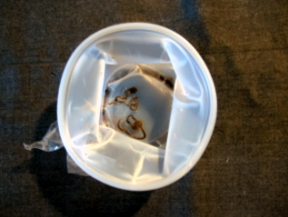
Figure #1: Photo micro-graph of the subject material submitted for evaluation. Basically this material appears to be “ribbons” of metal. The metal is Ferro-magnetic. Therefore it is most likely mild steel.
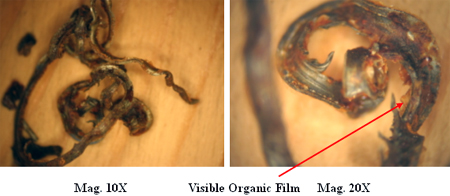
Figure #2: Photomicrographs of the largest piece of the submitted material. It is a ribbon of material similar to chips or stringers generated by a machining operation. There is an organic film visible on the subject piece. It was analyzed with FTIR and this matches exactly the protective epoxy coating applied to the can tops of the product in which the contaminant was discovered (Please see the figures below).
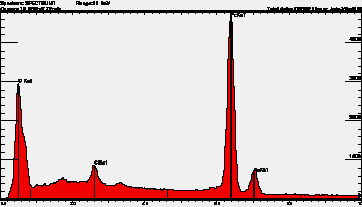
Figure #3: The elemental composition of the piece shown in Figure #’s 1 & 2. The elements present art iron (Fe), carbon (C) and oxygen (O). This matches the mild steel used to make the can top.
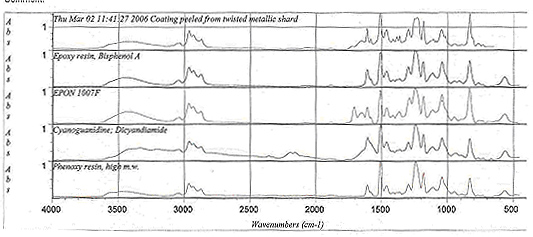
Figure #4: FTIR spectrum of the organic film visible on the piece analyzed. The spectrum is compared to various epoxies. This is a perfect match for the epoxy coating applied to the tops of this type of food can.
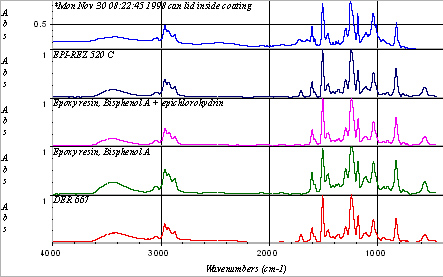
Figure #5: FTIR spectrum of the epoxy coating applied to the inside of can tops. This is a perfect match to the organic film material found on the unknown piece submitted for analysis.




